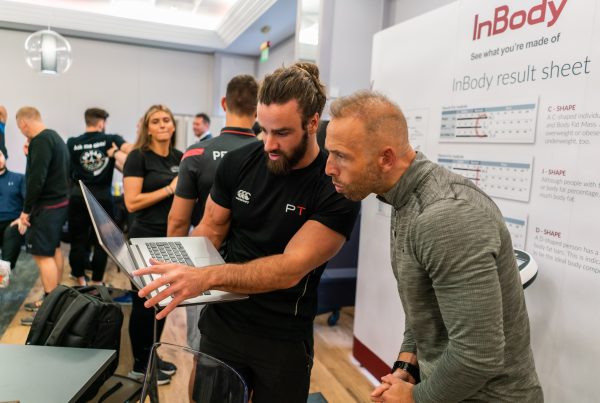If you recently decided to focus on losing excess weight, you probably noticed a small burst of motivation after choosing what your diet and training plans would look like. That sense of finally moving in the right direction…it can be pretty exciting.
And it should be! Make no mistake: making healthy choices about the quality and quantity of the food that you eat is a huge part of becoming a healthier version of yourself.
But the reality is the actual long-term success rate of diets is dismal. Sometimes people dive into their diets only to give up on them within weeks. What’s worse, studies have shown that only 1 in 5 people are successful at keeping the weight off in the long run. That means 80% of people fail to achieve their health goals. Is it simply a case of a lack of discipline? No!
A lot of people are making mistakes, and without proper guidance and education, chances are you too may end your fitness journey frustrated.
So without further ado, let’s take a look at the most common reasons that diets fail and explores strategies to help you push through those barriers and get closer to becoming a happier, healthier you.
1. Poorly Defined Goals
Having a dietary plan in place is a great place to start–as long as you have realistic expectations and clear goals. Now, before we dive into this, let’s get one thing out of the way: ideally, health and wellness is a journey, not a destination. The pursuit of a healthier mind and body is something that never truly ends and should simply become a way of life.
But…embracing that way of life isn’t easy. And expecting someone who’s never had to worry about nutrition or training regimen to become a health nut overnight is unrealistic. That very mentality is the foundation for why so many diets fail (but more on that later).
The average first-time dieter is going to be looking at an uphill battle. Yes, they’ll have to combat all of their old habits and temptations. And sure, making a health-oriented lifestyle second nature is a tall order. But if we really want to know what really ruins people’s efforts, we need to take a look at the glaring flaw in most nutrition plans: the lack of clearly defined goals.
It may sound obvious, but many people begin fitness journeys with only the vaguest of goals, which sets them up for potential failure, especially in the long-term.
-
Clearly Define Success
If you ask the first-time dieter, they might say that they want to lose 20-30 pounds or ‘look good in a swimsuit’ in 30 days. Setting these types of goals are a common mistake. Most people typically don’t have reasonable expectations on how long it will take to make substantial changes. By setting unrealistic, vague goals you are setting yourself up to fail. If you want to ensure your success, you need to understand not only where you stand right now in terms of body composition, but where you want your body composition to be in the future.
To put things simply: how can you expect to hit a target when you don’t know exactly what you’re aiming for?
That’s where an understanding of your body composition comes in handy.
Once you understand how much Lean Body Mass and Fat Mass you have, you’ll be in a better position to tackle the next important question: which do you want to address first?
Your body will have an unique response to different programs. Whether you decide to focus on fat loss first or developing Lean Body Mass, the key is that you create a goal-oriented plan that can keep you on track.
Additionally, dieting is more than just figuring out what you should be eating. The ideal diet has to be paired with a series of realistic, achievable goals that you can measure. What gets measured gets managed, and vague goals are the bane of any successful training plan. The more well-defined your goal is, the easier this journey will be for you.
Instead of saying you want to ‘get stronger’, focus on gaining 5 pounds of muscle. Instead of wanting to ‘look good in a bikini’, focus on losing 10 pounds of fat. Not only does this help as a way to keep you motivated and consistent throughout the process, this subtle change in mentality can actually have a massive impact on the overall effectiveness of your training.
You’ll be able to avoid increasing your Fat Mass while adding those extra 5 pounds to your Lean Body Mass. On the flip side, you can avoid losing muscle (which can have some pretty disastrous consequences , even more so as you age). The real power of keeping track of your progress is that you’ll constantly be aware of what’s working, what isn’t, and how you can improve.
-
Track Key Milestones
So now that you’re tracking your body composition, you’ve clearly defined a goal and you’ve chosen an approach. These are all powerful concepts, but the glue that will hold them together is the use of milestones en route to that goal.
Milestones matter because they help you celebrate small successes on your fitness journey. They’re the answer to the question of ‘how do I keep myself on track for the next 3 months?’ Losing 10 pounds of Fat Mass is going to take quite a bit of work and time, so it helps to track smaller accomplishments along the way.
When you create a list of milestones, you’ll have built a roadmap for your fitness journey. Once you understand what your goal looks like, each milestone can be used to keep you charging in the right direction. Beyond that, they give you the opportunity to make health and wellness second nature over time.
What do realistic milestones look like, from a body compositional standpoint? These will vary for everyone, but generally speaking, someone who creates a caloric deficit of 500 calories per day (a 3,500 calorie weekly deficit) stands to lose 1 pound of body fat per week, or 4 pounds a month if the diet is “perfect” all month.
It gets tricker to set muscle milestones, because there are so many factors that contribute to effective muscle gain. However, assuming you’re new to muscle-building, one realistic estimate is that you can add about two pounds of muscle per month, with this number decreasing over time as you continue to lift.
If you really want to make being healthy a habit, create a series of milestones and you’ll have more than the undeniable proof that what you’re doing just isn’t working–you’ll be on your way to making health a priority in your life.
2. The Expectation of Perfection
There’s nothing wrong with dreaming big when it comes to diet and exercise. We should all strive to want to be the strongest, healthiest versions of ourselves. However, envisioning something for your future and expecting it virtually overnight is not a recipe for success.
Many times people aspire to some idealized expectation of perfection, and so they set unrealistic goals, like dropping 30 pounds in 2 months. This is a mistake.
By nature, diets tend to be restrictive. In fact, most diets are designed with the intent of planning out each of your meals for you. The idea is that by erasing the need to think about what your next meal will look like, you’re more likely to make the right choice and stick to your diet.
Of course, that works perfectly well on paper. But in the real world, it’s hard to be perfectly consistent. The reality is mistakes will be made, and that’s OK. Your birthday/anniversary is coming up. Grandma will be offended if you don’t eat her famous chocolate cake. Or you are stuck at a event that lacks healthy food choices. These are just a few situations that diets aren’t really designed to account for.
Here’s what’ll usually happen. More often than not, you’ll have a person who wants to stick to their diet but can’t for some unavoidable reason. The issue here is that they then tend to fall into the trap of saying “well, I already messed up lunch. I’ll just make today a cheat day and start again tomorrow.”
Unfortunately, a cheat day can quickly turn into a cheat week and slowly but surely, people are completely off track. Think of this as the ‘New Year’s Resolution Effect’. Trying to take on too much, too soon is tough enough, but expecting everything to go perfectly according to plan can be a recipe for disaster.
This expectation of perfection is more than just unrealistic. It has the potential to undermine the average person’s health journey and, worse, make them think that they’re incapable of dieting properly.
So, how do you avoid this dieting trap? Simple: stop expecting perfection.
To clarify, if you want to have a successful diet, stick to the script as best you can. But the occasional cheat day won’t undo weeks or months of training and dieting. You need to be willing to forgive yourself for any mistakes that you make along the way.
Just remember that moderation is key here. A cheat day once a month is one thing, but a cheat weekend can get out of control quickly. Once that cheat day is over, you need to be ready to tackle tomorrow with the same intensity as before.
3. An Imbalanced Approach
This is arguably the easiest mistake to make when it comes to your health and wellness journey. And the worst part? This issue might seem minor, but it can have a massive impact on your results. So, what is this mysterious issue we keep alluding to? Imbalance.
One of the most common issues that you’ll notice with a person just getting started on their fitness journey (and even seasoned veterans) is a lack of balance between diet and exercise when it comes to their approach.
Some people are guilty of making their diet a priority and neglecting their physical training. Others are guilty of putting all the focus on their physical training without paying too much attention to the quality of their diet. No matter which side of the imbalance an individual is on, that person’s results and progress will suffer.
Without proper training, expecting your body to increase lean body mass and decrease fat mass by itself is wishful thinking, at best. Study after study has shown that the most effective way to help your body build lean mass and lose fat mass is through a regularly implemented strength training regimen AND an optimized diet.
For those of you who think they can just start some type of exercise plan and see results, think again. If you want to hit those milestones that you’ve planned out and actually improve your body composition, you’ll need to have a diet that allows you to improve it. Specifically, you need to be following a diet that falls in line with your current body composition and body composition goals. How can you do that?
We’ve covered the BMR (Basal Metabolic Rate) hacking approach in-depth before, but here’s the abridged version: By determining your BMR using your Lean Body Mass, you’ll be able to calculate how calories your body needs on a daily basis to keep you alive. This is critical.
Once you have that information, you can start thinking about your caloric needs in terms of planning a diet by converting your BMR into your TDEE (Total Daily Energy Expenditure). Your TDEE is a general estimate of how many calories you body uses during the day, and you can use it to plan out your diet.
Are you trying to optimize your diet for weight loss? Then you’ll need a caloric deficit. Trying to gain Lean Body Mass? You’ll need to go beyond your typical caloric needs. Knowing your body composition and having a clearly defined goal means that you can use tools like BMR diet-hacking to get results sooner and more consistently than ever before.
Staying Consistent
Keep in mind that building new habits and improving your health is not going to be simple. Even if you’re able to take these lessons to heart and overcome these three common obstacles, you’ll still face unexpected difficulties. Dieting, training and the overall journey towards becoming a healthier you will almost certainly be a challenging experience. But if you’re ever in a tough spot, keep in mind the overall theme of these solutions.
The tangible solutions of creating milestones, discarding the expectation of perfection, and having a balanced approach to your diet and training all have one thing in common: They’re built on the understanding that, at the end of the day, you’re a human being
People make mistakes and poor choices. And change is anything but easy. Accepting how hard this journey is going to be is the first step to actually completing it. The second step? Realizing that you CAN do this if you set yourself up for success and arm yourself with the knowledge to reach your goals.
***
Brian Leguizamon is a content marketing specialist. Brian has worked with Shopify, Gigster and a bunch of startups you’ve never heard of. When he’s not working, you’ll find him at his local gym, waiting for the squat rack to open up






